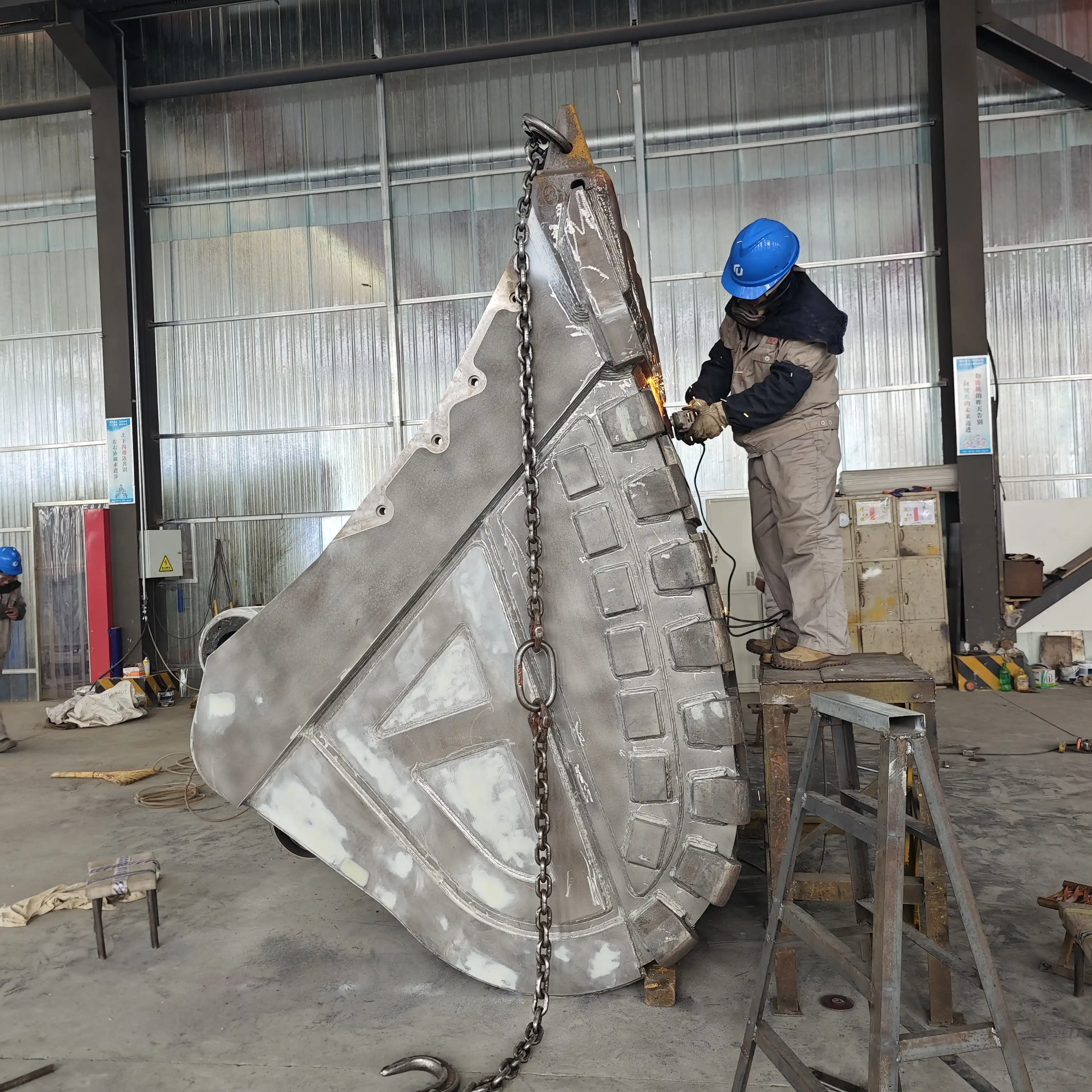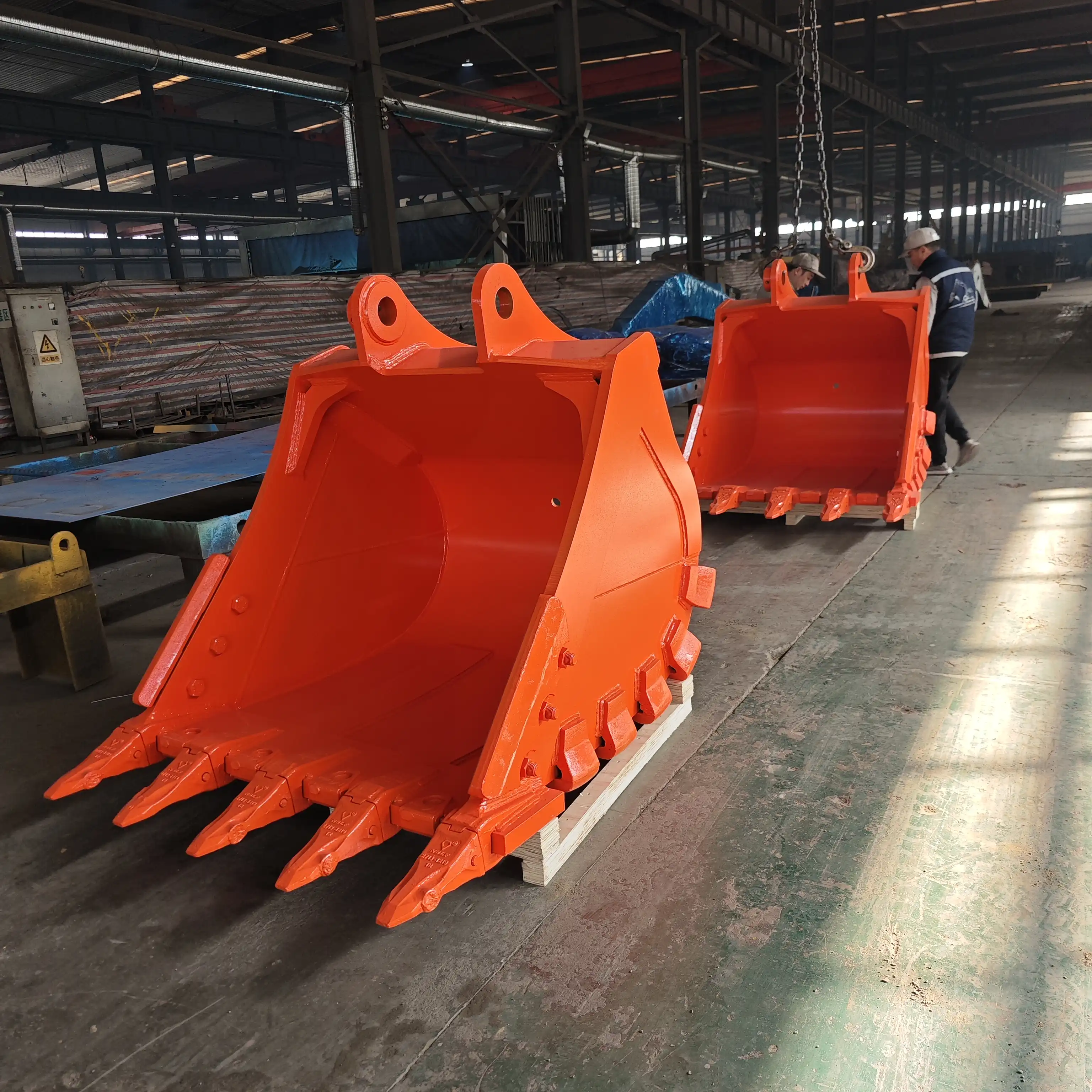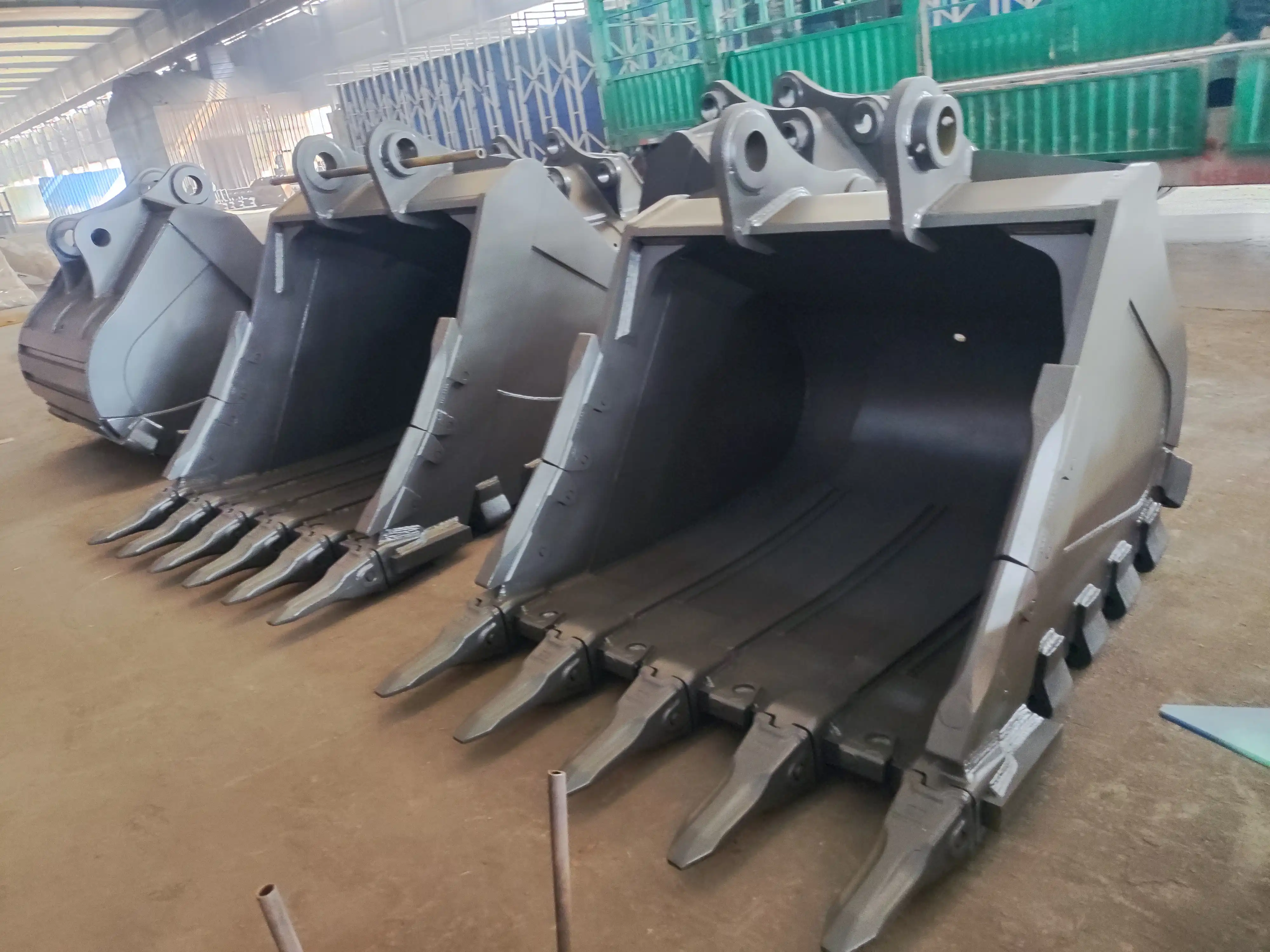Are all excavator buckets the same?
No, all excavator buckets are not the same. They differ significantly in size, design, material composition, and intended applications. Buckets are specialized attachments engineered for specific tasks and excavator models, ranging from lightweight trenching buckets to heavy-duty rock buckets. Each type features unique characteristics optimized for particular materials and working conditions. The variations include capacity (0.1-5.0 cubic meters), width (500-2000mm), weight (100-2000kg), and tooth configuration. Material composition also varies, with higher-grade wear-resistant steel used in buckets designed for abrasive environments. Additionally, attachment systems differ between models, utilizing either pin-on connections or quick couplers.
All Excavator Buckets Are Not The Same

The variation among buckets extends far beyond simple size differences, encompassing crucial design elements, material composition, and application-specific features that significantly impact performance across different working conditions.
Design Variations
The bucket profile represents one of the most visible design variations. General-purpose buckets typically feature a rounded profile with moderate curvature, optimized for handling loose materials like soil and gravel. In contrast, heavy-duty digging buckets incorporate a more aggressive profile with increased curvature to enhance penetration in compacted materials.
The cutting-edge design varies substantially between bucket types. Some incorporate smooth edges ideal for finish grading applications, while others feature replaceable teeth in various configurations suited for breaking through different material densities. Tooth spacing and style—from standard chisel points to specialized rock teeth—dramatically affect digging efficiency in specific applications.
Internal reinforcement structures differ significantly based on intended use. Light-duty buckets may utilize minimal internal bracing to reduce weight, while severe-duty versions incorporate extensive reinforcement plates, wear strips, and corner protectors designed to withstand extreme stress and abrasion in demanding environments.
Material Composition Differences
Steel grade selection represents a crucial distinction between bucket types. Standard buckets often utilize mild steel with hardness ratings around 200-300 HB (Brinell hardness). Premium buckets incorporate specialized high-carbon alloys with hardness ratings exceeding 400-500 HB, offering superior resistance to abrasion, impact, and deformation.
Wear component materials vary significantly between economy and premium models. Basic buckets feature standard wearing components, while advanced versions incorporate hardened inserts, overlay materials, or even specialized ceramic composites in high-wear zones. These materials can extend operational lifespan threefold or more in challenging conditions.
Manufacturing techniques create substantial quality differences. Economy buckets often utilize standard welding processes and minimal machining. Premium buckets incorporate precision robotic welding, stress-relieving heat treatments, and extensive machining to ensure dimensional accuracy and structural integrity under extreme loads.
Application-Specific Features
Side cutters differ significantly between models designed for different applications. Buckets intended for trenching often feature extended side cutters to create clean, vertical trench walls. Grading buckets typically incorporate minimal or no side cutters to enable smooth finishing operations without gouging.
Drainage hole configuration varies based on intended use. General-purpose buckets typically include several modest drainage holes to prevent material suction while retaining fine particles. Skeleton buckets designed for sorting applications feature extensive openings allowing soil and fine materials to pass through while retaining larger objects.
Special features address specific operational challenges. Some specialized buckets incorporate hydraulic thumbs for grasping irregular objects, while others feature integrated ripper shanks for breaking hardened surfaces. Certain models include specialized liners for handling sticky materials like clay, preventing material buildup that reduces operational efficiency.
Excavator Size and Weight

The relationship between excavator specifications and bucket attachmentsselection represents a critical consideration for optimizing operational efficiency and equipment longevity across diverse applications.
Machine Class Compatibility
Mini excavators, typically weighing between 1-7 tons, require specialized compact buckets designed for their limited hydraulic capacity and dimensional constraints. These machines commonly utilize buckets ranging from 0.1-0.3 cubic meters, with narrower widths optimized for precision work in confined spaces. Attempting to use oversized attachments on these machines creates dangerous instability and risks hydraulic system damage.
Mid-sized excavators in the 8-25 ton range accommodate a broader range of attachment options, typically using buckets between 0.4-1.2 cubic meters. These versatile machines represent the backbone of many construction operations, offering sufficient power for substantial excavation while maintaining maneuverability across various job sites.
Heavy excavators exceeding 25 tons demand robust, reinforced buckets capable of withstanding massive breakout forces and handling substantial material volumes. These machines commonly utilize buckets ranging from 1.3-5.0 cubic meters, designed with extensive reinforcement and wear protection to withstand the extreme forces these powerful machines generate.
Lifting Capacity Considerations
Bucket weight significantly impacts effective lifting capacity, requiring careful consideration during selection. Standard buckets typically weigh approximately 8-12% of the excavator's maximum lifting capacity, while heavy-duty versions can reach 15-20%. Selecting excessively heavy attachments reduces the machine's effective material-moving capacity and may create dangerous instability in extended positions.
Material density interaction with bucket capacity presents another crucial consideration. When handling dense materials like wet clay (approximately 2,000 kg/m³) or crushed stone (approximately 1,600 kg/m³), operators must select buckets with appropriate capacity to prevent exceeding the excavator's lift specifications. Failure to account for material density often leads to overloading conditions that damage hydraulic components and create safety hazards.
Counterweight requirements change based on attachment selection. Machines operating with larger or heavier buckets often require additional counterweighting to maintain stability, particularly when working on uneven terrain or performing extended-reach operations. This additional weight impacts ground pressure, transportability, and overall machine performance.
Specialized Buckets

Beyond standard configurations, specialized excavator buckets address specific operational challenges across diverse industries, offering tailored solutions for unique material handling requirements and specialized applications.
Industry-Specific Designs
Railway maintenance operations utilize specially designed buckets with modified profiles to accommodate track geometries and specialized work constraints. These attachments often feature elongated designs with reinforced edges capable of reaching beneath tracks without disturbing ballast integrity. Their specialized configuration enables efficient debris removal, ballast reshaping, and track maintenance while maintaining strict dimensional tolerances required in railway environments.
Demolition applications demand exceptionally robust bucket designs incorporating enhanced reinforcement and specialized features. These heavy-duty attachments often feature integrated hydraulic crushers or specialized cutting edges designed for breaking concrete and severing rebar. Their reinforced construction includes additional wear plates, heavy-duty pivot points, and specialized high-tensile steel to withstand extreme impact loads and abrasive conditions.
Forestry operations utilize specialized buckets with integrated features for vegetation management and land clearing. These attachments often incorporate root rakes, thumb accessories, or specialized cutting edges designed for efficient brush removal and stump extraction. Their reinforced construction withstands contact with hidden obstacles while maintaining effectiveness in challenging terrain conditions.
Material-Specific Variations
Rock handling applications require buckets with substantial reinforcement and specialized tooth configurations. These heavy-duty attachments feature enhanced steel thickness, often exceeding twice the standard specification, with additional wear strips and reinforced corners. Their specialized tooth arrangements maximize penetration force while withstanding extreme abrasion from hard, fractured materials.
Clay and cohesive soil applications benefit from specialized bucket designs featuring smooth interior surfaces and modified profiles to minimize material adhesion. These attachments often incorporate specialized non-stick coatings or polished surfaces to enhance material release, preventing the productivity-sapping buildup that commonly occurs when handling sticky materials with standard buckets.
Screening operations utilize specialized skeleton buckets designed to separate materials by size. These attachments feature carefully designed openings that allow smaller particles to pass through while retaining larger objects. Advanced versions incorporate adjustable screening plates or interchangeable grids to accommodate different material separation requirements, enhancing versatility across various applications.
FAQ

①How do I choose the right bucket for my excavator?
Selecting the appropriate bucket requires matching your excavator's specifications with your operational requirements. Begin by confirming your machine's weight class and hydraulic capacities. Then assess your typical materials—consider density, abrasiveness, and cohesiveness. Evaluate your common applications, whether trenching, grading, or heavy digging. Finally, consider attachment system compatibility (pin-on vs. quick coupler). Consulting with attachment specialists helps ensure optimal matching between your machine capabilities and bucket specifications for maximum productivity.
②Can I use the same bucket for different materials?
While general-purpose buckets offer reasonable versatility across moderate conditions, optimal efficiency requires matching bucket characteristics to specific materials. Dense or abrasive materials demand reinforced buckets with appropriate tooth configurations. Cohesive materials like clay perform better with smooth-sided buckets featuring specialized coatings. Different materials also affect optimal bucket capacity—lighter materials allow larger buckets, while dense materials require reduced capacity to prevent overloading. For operations handling diverse materials, quick-coupler systems enabling rapid attachment changes provide the best operational flexibility.
③What maintenance do excavator buckets require?
Effective bucket maintenance includes daily inspection for loose or damaged teeth, cracks in wear surfaces, and distorted cutting edges. Replace worn teeth promptly to prevent damage to tooth adapters. Clean buckets daily, removing packed material that accelerates wear and reduces efficiency. Check and tighten all bolts and fasteners weekly. Inspect wear strips and reinforcement plates monthly, replacing when worn beyond 50%. Address minor cracks immediately through proper welding procedures to prevent catastrophic failure. Apply appropriate hardfacing to high-wear areas preventatively rather than after excessive wear occurs.
About Tiannuo

As we've explored throughout this article, the answer to "Are all excavator buckets the same?" is a definitive no. The diversity in designs, materials, and configurations reflects the wide range of specialized applications these crucial attachments serve across industries, from railway maintenance to forestry, demolition to precision grading.
At Tiannuo Machinery, we recognize that the bucket for excavator selection represents a critical business decision. Our comprehensive range includes options manufactured from high-strength wear-resistant steel with capacities ranging from 0.1 to 5.0 cubic meters, weights from 100 to 2000 kg, and widths from 500 to 2000 mm. Whether your requirements demand pin-on attachments or quick coupler systems, our manufacturing expertise ensures compatibility with all major excavator brands.
What truly distinguishes our offerings is our commitment to customization. We understand that standardized solutions often fall short in specialized applications. Our engineering team works directly with clients to develop bucket specifications precisely tailored to their unique operational challenges and equipment configurations.
For expert guidance on selecting the optimal bucket for your specific requirements, contact our team of attachment specialists at rich@stnd-machinery.com. Let us help you maximize your excavator's potential with attachments engineered for your precise operational needs.
References

Construction Equipment Guide. "Understanding Excavator Attachment Compatibility and Selection." Heavy Equipment Manual, Volume 18, 2023.
International Journal of Construction Engineering. "The Impact of Specialized Excavator Attachments on Operational Efficiency." Volume 12, Issue 2, 2024.
Smith, Jonathan R. "Modern Excavator Technology: Equipment Selection and Optimization." Construction Technology Press, 4th Edition, 2023.
Wilson, Emily and Martinez, Carlos. "Heavy Equipment Attachments: Engineering Principles and Applications." Industrial Machinery Publication, Volume 7, 2022.
Zhang, Wei. "Material Handling Equipment in Construction: Selection Criteria and Performance Analysis." Construction Equipment Review, Winter Issue, 2023.
About Author: Arm
Arm is a leading expert in the field of specialized construction and railway maintenance equipment, working at Tiannuo Company.

